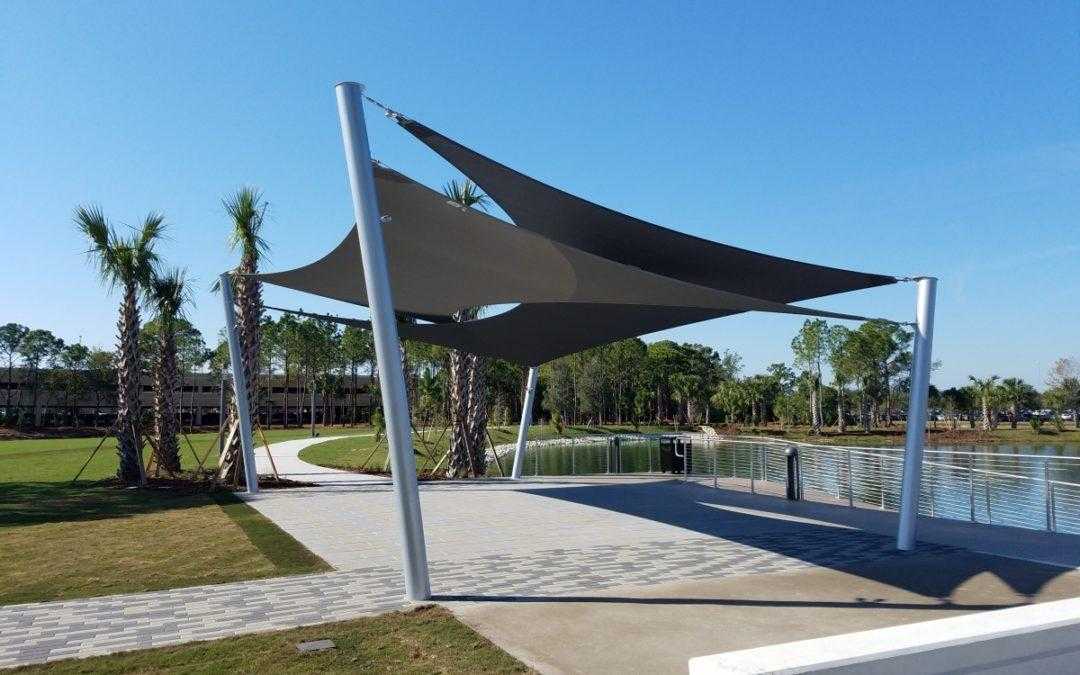You need to choose the best shade structure material that meets your specific needs. Commercial-grade sun sails are a great choice for an outdoor area because they provide up to 95% UV protection, as well as being water and fire-resistant. Sun sails come in various shapes and sizes, so you can find one perfect for your space’s layout or design tastes.
Each type has benefits including cost-effectiveness, environmental sustainability, and even weather resistance. Let’s take a look at some materials often seen with outdoor shading products so that you can make an informed decision about what is right for you!
Table of Contents
ToggleBenefits of Commercial-Grade Sun Sail Shades
When it comes to outdoor shade sails, commercial-grade materials offer superior performance and increased longevity. Constructed from strong woven fabrics like vinyl-coated polyester or acrylic, these sun sail shades are resistant to fading and provide a higher level of protection against harmful UV rays.
Comparative Performance of Different Materials
As you can see, the material used in your shade affects its strength, durability, and weather tolerance. You should carefully consider each of these qualities to choose an appropriate fabric that meets your needs. Different materials come with their own set of strengths as well as drawbacks, which may or may not be suitable for particular cases.
It’s critical to think through all factors when choosing a material for shades so that it provides a maximum benefit over time!
Strength and Durability Factors to Consider
You need to ensure the material you choose can withstand extreme weather conditions such as strong winds and heavy rains. Look for products with high tensile strength, durability, and UV resistance properties, all of which will help guarantee long-term performance. Consider fire retardancy features, too. This is especially true if you’re considering certain types of synthetic materials like vinyl or canvas shades.
Weather Tolerance of Different Materials
The weather tolerance of different materials used in shades varies drastically. Different fabrics, metals, plastics, and textiles are used depending upon their ability to withstand particular amounts of sunlight as well as resist wear from rain or snowfall. Shade sails provide protection against UV radiation but can also add a practical element that doesn’t require whole-home sunscreens or sunscreen roller blinds within living spaces like homes or commercial buildings.
Understanding how different materials respond to varying climate conditions is essential knowledge if you are looking at installing shade sails. This can include the regular type with metal eyelets on each corner, as well as ones designed with crimped steel cable.
Cost Differences Across Shade Material Types
Each type of fabric for shade sails has its own unique pros and cons that affect the total cost. Natural fabrics are often more expensive than synthetics but tend to last longer in most climates. Synthetic materials may require more frequent replacement due to UV damage or stretching.
Acrylics can be quite costly compared to other fabrics, but their colorfastness makes them a good choice in some cases.
ShadePro provides all the materials you need for your shading needs. Whether you’re looking for a more permanent solution like aluminum, or something lightweight and easy to install such as vinyl-coated polyester fabric. ShadePro offers everything in between! Aluminum can resist rust and corrosion while 100% waterproof marine-grade fabrics are perfect if you plan on having an outdoor space near water.
In terms of wind resistance, aluminum structures hold up better than any other material, with tensioned models offering even stronger protection against gusts. No matter what kind of environment you live in, ShadePro has got the right material for your shades so that they last longer and perform better outdoors!
Categories
Recent Posts
Advertisement


